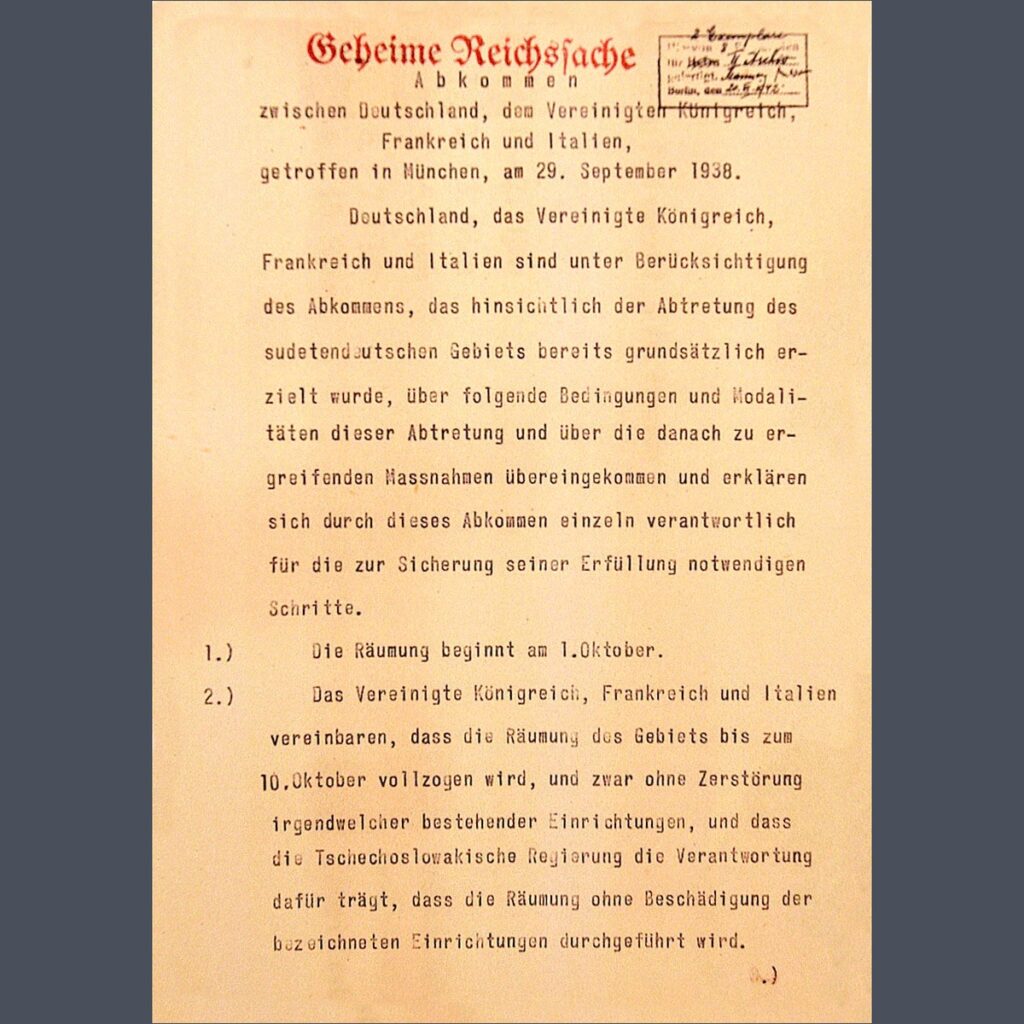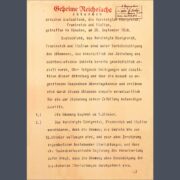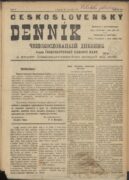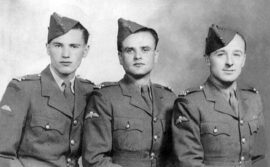
01 Munich Agreement
Fotogalerie

In 1938, the Czechoslovak Republic found itself at a fateful crossroads. The first concept of German military troops attacking Czechoslovakia was produced as early as mid-1935.
The steps that the Sudeten German Party – which became, under the leadership of Konrad Henlein, the strongest political party in Czechoslovakia after the 1935 parliamentary elections – took from spring 1938 followed Hitler’s directives requiring the party to raise impossible-to-meet requirements towards the Czechoslovak Government. After the March Annexation of Austria (Anschluss) and the surveillance of the border in May, September 1938 arrived. The tense international situation and Germany’s escalating requirements resulted in the declaration of the mobilisation of the Czechoslovak Army. Shortly after came one of the major turning moments of the country’s history. On 29 September 1938, shortly after midday, the leaders of Germany, Italy, Britain, and France met in Munich. No participation of the Czechoslovak Government leaders was foreseen. The wording of the Munich Agreement was signed on 30 September 1938, shortly after midnight. Based on the pact, the Czechoslovak Army, which was determined to fight and well-organised, was forced to give up and render the borderland area of the State to the enemy without a fight. The removal of the Czechoslovak State as the last democracy in Central Europe was the direct consequence. In addition, Germany, Poland and Hungary were assigned a total of 29.6% of the original territory of the state, i.e. 41,596 square kilometres. The population loss amounted to 4,879,000 – as much as one third of the original number.
Aktuálně

Výzkum u českých krajanů v Chorvatsku

Československý deník sehrál v životě legionářů v Rusku velmi důležitou roli. Poprvé vyšel v prosinci 1917

Děkujeme za podporu pro válečné veterány. Sbírka DiGiMÁK vynesla 450 tisíc korun

Tak trochu zamrzlé spojení








